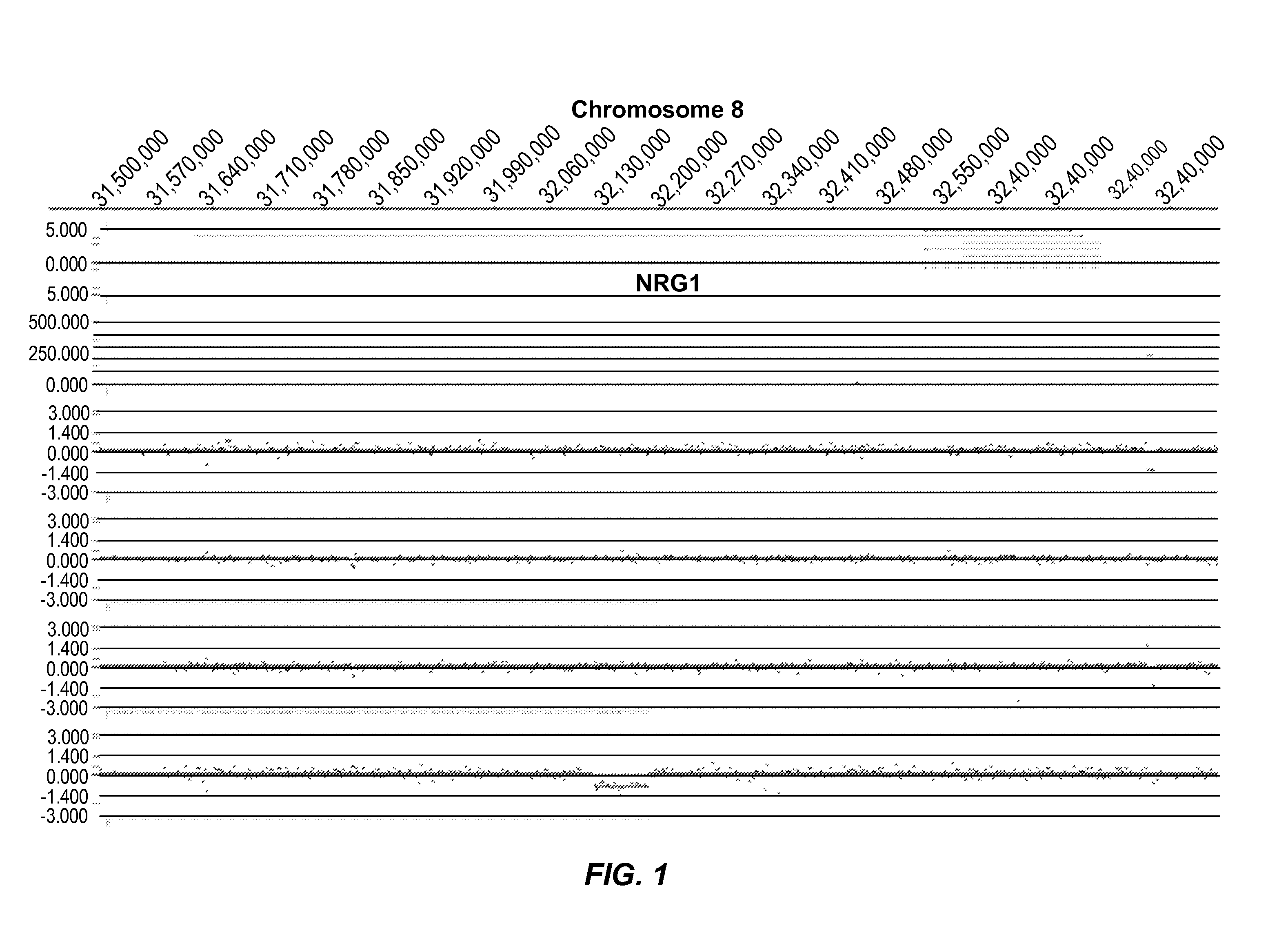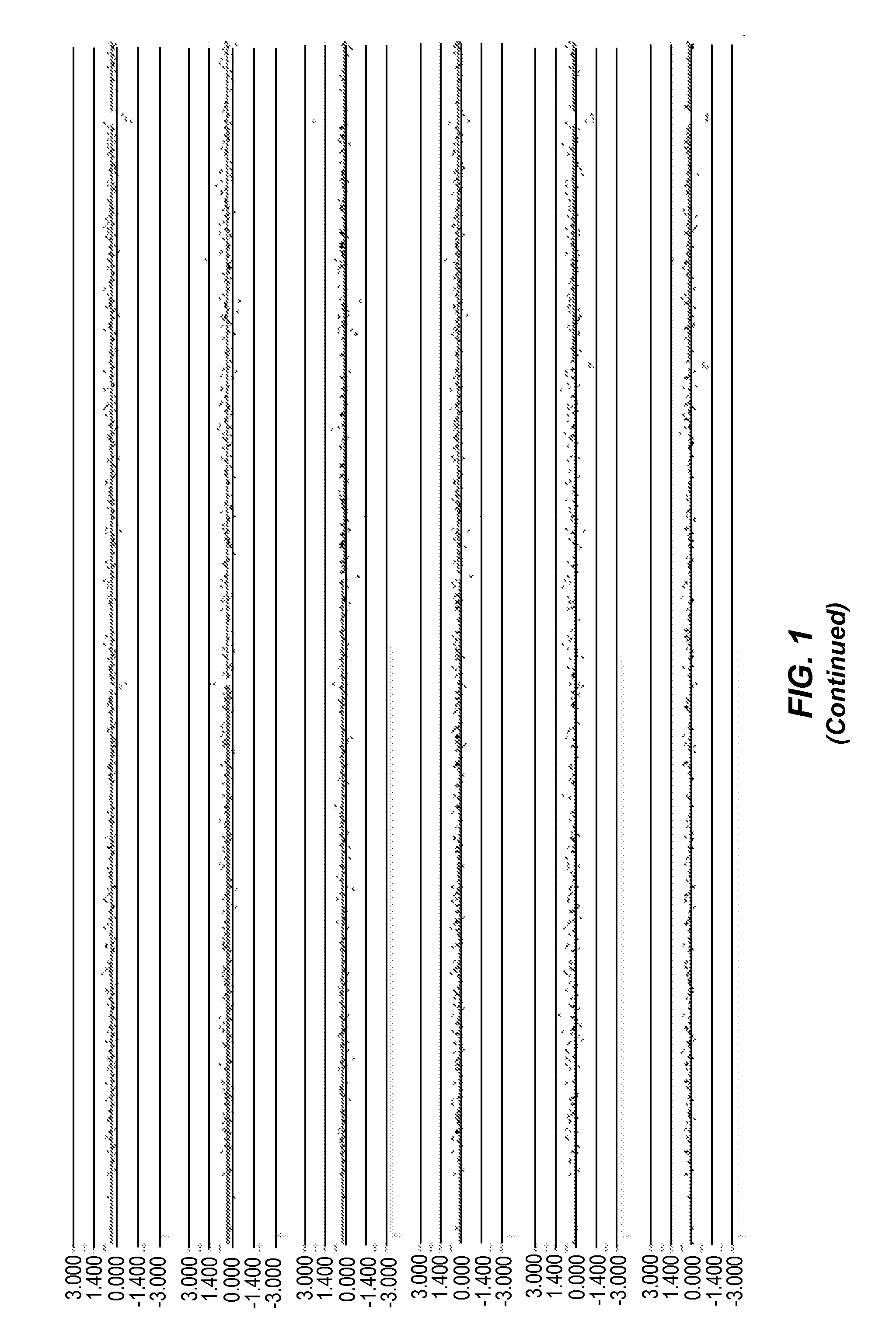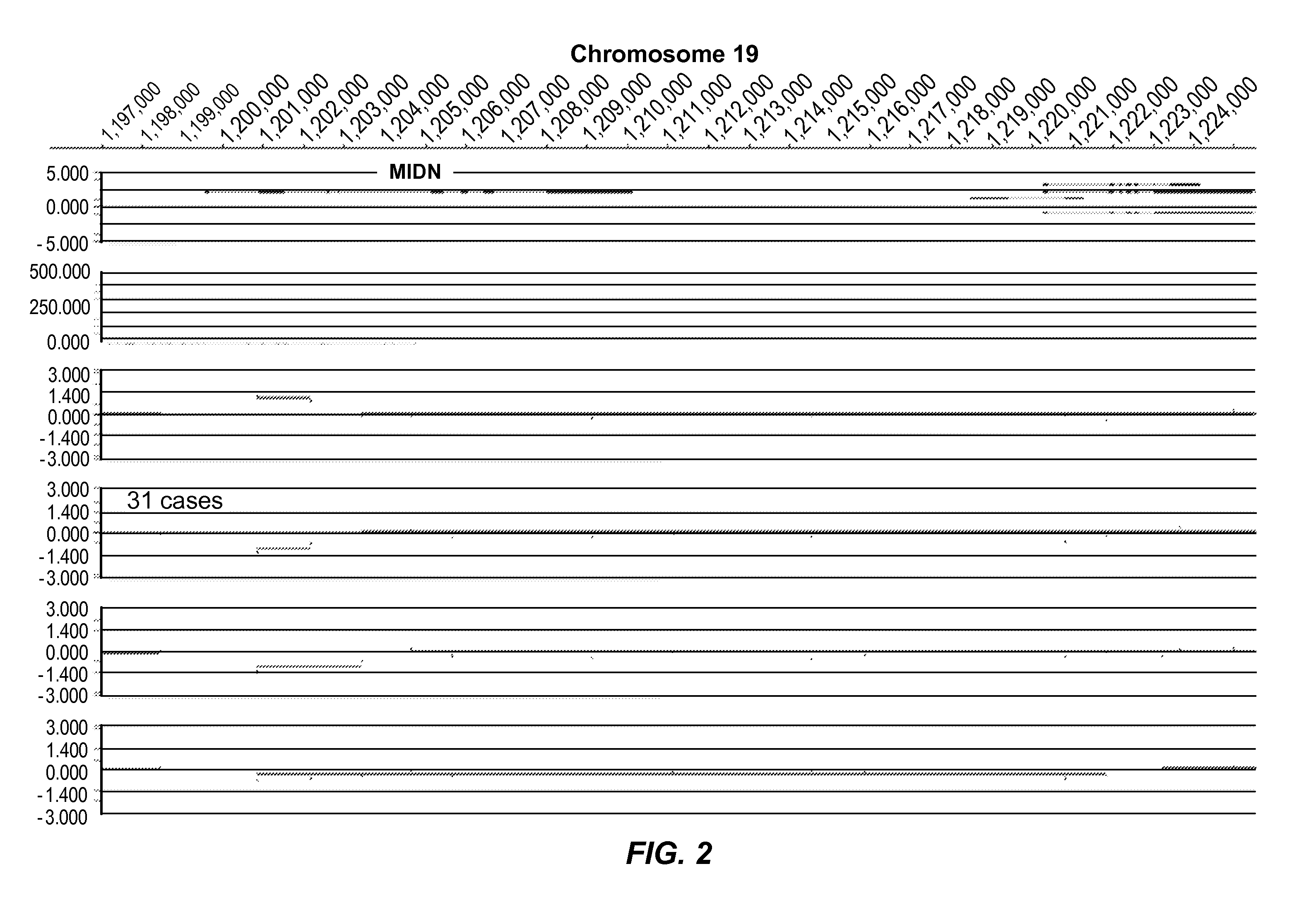Methods and compositions for screening and treating developmental disorders
a technology for developing disorders and compositions, applied in biochemistry apparatus and processes, microorganisms, tissue culture, etc., to achieve the effects of reducing susceptibility to dd, increasing expression, and decreasing expression
- Summary
- Abstract
- Description
- Claims
- Application Information
AI Technical Summary
Benefits of technology
Problems solved by technology
Method used
Image
Examples
example 1
[0364]In the present study, the Agilent 1M CGH array was used to detect novel, rare CNVs in a total of 1687 individuals in 2 cohorts:
[0365]1. 1,005 Normal individuals (Normal Variation Engine—NVE);
[0366]2. 682 ASD cases (ASD).
The Normal DNA samples were from apparently healthy Caucasian donors >45 years old. Health history information was documented at the time of consent via a questionnaire filled out by the donor. This information was used to select 1,000 Normals based on the following attributes: BMI between 15-35, blood glucose level <125 mg / dL, total cholesterol level between 100-300, systolic blood pressure between 100-150, and no major neurodegenerative diseases or psychiatric disorders (alcoholism, mental illness, depression, dementia, Alzheimer's disease, and Parkinson's disease).
[0367]For the ASD samples, Reference DNA samples were labeled with Cy3 and test subject cases with Cy5. After labeling, samples were combined and co-hybridized to Agilent 1M feature oligonucleotide...
example 2
[0393]Some pathway analysis software will be used to identify whether the candidate gene will be a drug target, which may be FDA-approved or in clinical trials. Such information will assist in the design of clinical trials (e.g., patient stratification for genetic subtypes) or will be used to facilitate clinical trials that are in progress, thereby reducing the attrition rate (failure to receive FDA approval) and reducing the time and cost of drug development. When a candidate ASD gene is identified as a known drug target of an FDA-approved therapeutic, the drug can be repurposed and approved for use in a new indication (e.g., a cancer or anti-inflammatory agent may be beneficial to ASD patients as well). Those skilled in the art will recognize that Phase II and III failures may be rescued with additional clinical trial data that accounts for genetic subtypes, particularly when the drug fails for lack of efficacy. For example, if a drug will be designed or established to target a pa...
example 3
[0394]FIG. 1 represents an example of group 1 (Genic (distinct CNV-subregions); OR>6). There are 10 ASD cases and 0 NVE subjects affected by non-overlapping and overlapping CNV-subregions. The CNV are gains (log 2 ratio>0.35) or losses (log 2 ratio<−0.35) and affect the gene NRG1 on chromosome 8. The calculated odds ratio (OR) for this CNV-subregion is 14.94.
[0395]In the figure, three tracks of information are shown, from top to bottom: 1) RefSeq gene annotation showing the genome location (x-axis) of genes demarcated in light gray (introns) and dark gray (exons) and with multiple entries depicted if multiple transcript variants are annotated that correspond to the gene; 2) size and genome location (x-axis) for normal CNVs annotated for greater than 1,000 unaffected / normal individuals, with CNVs demarcated by dark gray bars and the y-axis corresponds to the number of individuals in the normal cohort found to have the CNV; 3) array CGH data (black dots correspond to the probes on the...
PUM
| Property | Measurement | Unit |
|---|---|---|
| Fraction | aaaaa | aaaaa |
| Fraction | aaaaa | aaaaa |
| Fraction | aaaaa | aaaaa |
Abstract
Description
Claims
Application Information
 Login to View More
Login to View More - R&D
- Intellectual Property
- Life Sciences
- Materials
- Tech Scout
- Unparalleled Data Quality
- Higher Quality Content
- 60% Fewer Hallucinations
Browse by: Latest US Patents, China's latest patents, Technical Efficacy Thesaurus, Application Domain, Technology Topic, Popular Technical Reports.
© 2025 PatSnap. All rights reserved.Legal|Privacy policy|Modern Slavery Act Transparency Statement|Sitemap|About US| Contact US: help@patsnap.com



